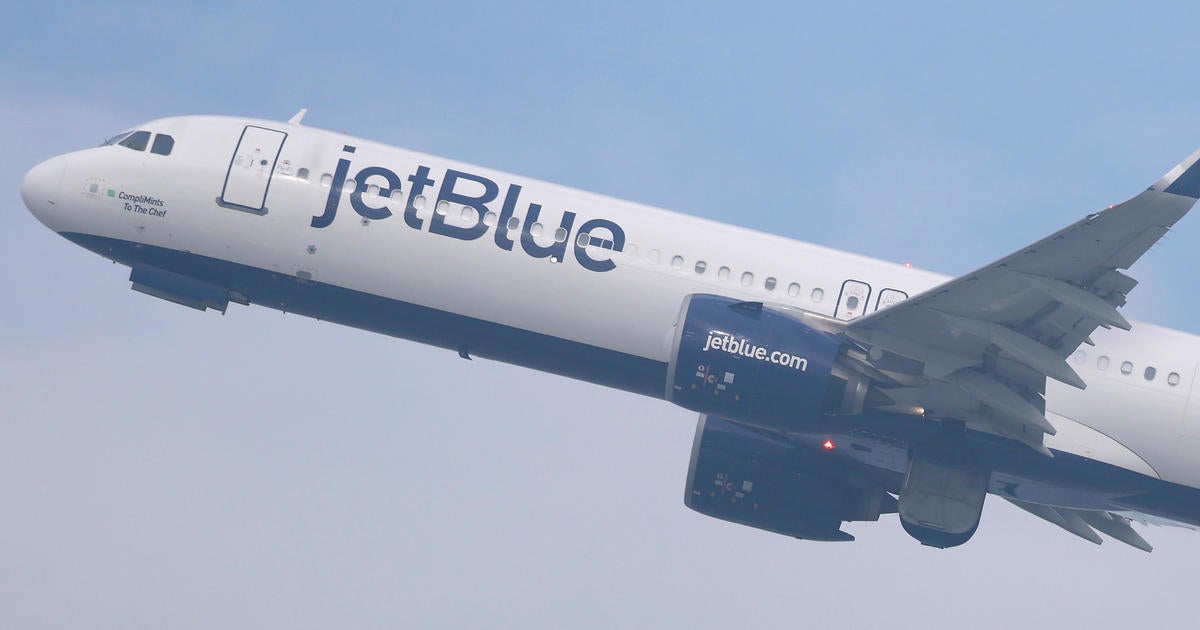Icefall: A Shocking Incident Involving JetBlue Flight
In a startling turn of events, a couple in the United States has filed a lawsuit against JetBlue Airways after a chunk of ice reportedly fell from a JetBlue flight and crashed through their bedroom ceiling while they were asleep. This bizarre incident raises numerous questions about airline safety, the responsibilities of airlines regarding falling debris, and the potential hazards faced by residents living near flight paths. The event not only shook the couple from their slumber but also sparked widespread discussion about aviation safety protocols and the measures airlines take to ensure that such accidents do not occur.
The Incident: What Happened?
According to reports, the incident occurred in the middle of the night when the couple was fast asleep in their home. Suddenly, a loud crash startled them awake, only to discover that a large chunk of ice had penetrated their bedroom ceiling. The ice, reportedly weighing several pounds, fell from an aircraft flying at cruising altitude. Thankfully, the couple was unharmed, but the shock and potential danger of the incident raised significant concern.
Following the event, the couple took immediate action, documenting the damage and reporting the incident to the authorities. They later filed a lawsuit against JetBlue, claiming negligence on the part of the airline. This lawsuit highlights not only the physical damage caused by the falling ice but also the emotional distress experienced by the couple due to the unforeseen danger they faced in their own home.
Understanding the Causes of Falling Ice
Falling ice from aircraft, often referred to as “icefall,” can occur under specific circumstances, primarily influenced by the following factors:
- Weather Conditions: Ice formation on aircraft wings and fuselage is most common in cold weather conditions where moisture is present. When an aircraft ascends or descends, it can shed this ice, particularly as it enters warmer air.
- Aircraft Maintenance: Regular checks and maintenance are crucial. If an aircraft is poorly maintained, the risk of ice shedding increases.
- Aerodynamic Factors: The design of some aircraft can lead to ice accumulation in specific areas. Pilots are trained to recognize these conditions and take precautionary measures.
Airlines have protocols to manage ice build-up, including de-icing procedures before takeoff. However, it’s not uncommon for ice to fall off during flight, especially if the aircraft has been in operation for an extended period.
The Legal Implications of the Icefall Incident
The couple’s lawsuit against JetBlue brings to light several legal questions about liability and airline responsibility. Under aviation law, airlines are expected to maintain a certain standard of care to ensure the safety of both their passengers and those living in proximity to flight paths. Factors to consider include:
- Negligence: The couple must prove that JetBlue failed to exercise reasonable care, either through inadequate maintenance practices or failure to follow safety protocols.
- Proximate Cause: The lawsuit must establish that the falling ice was a direct result of the airline’s actions or inactions.
- Damages: The couple will need to demonstrate the extent of the damages, both physical (repairs to their home) and emotional (stress and anxiety caused by the incident).
Broader Implications for Airline Safety
This icefall incident raises broader concerns regarding airline safety and the implications for urban planning near airports. As air traffic continues to increase, so does the potential for incidents like this, which can lead to serious injuries or worse. Some key considerations include:
- Aviation Regulations: Regulatory bodies such as the Federal Aviation Administration (FAA) need to evaluate current regulations regarding ice accumulation and falling debris to ensure public safety.
- Community Awareness: Residents living near airports should be made aware of potential risks. This awareness can lead to better preparedness in the event of a similar incident.
- Improved Technology: Advancements in technology may help in predicting and preventing ice formation on aircraft, potentially reducing the risk of falling debris.
How Airlines Handle Ice Accumulation
To prevent incidents like the one experienced by the couple, airlines have implemented several safety measures:
- De-Icing Procedures: Before takeoff, airlines often use de-icing fluids to remove ice from critical surfaces, ensuring safer flights.
- Training for Pilots: Pilots are trained to recognize conditions that could lead to ice accumulation and are instructed on how to manage it during flight.
- Regular Maintenance Checks: Airlines are required to conduct routine inspections and maintenance of their aircraft to ensure they are in optimal flying condition.
Conclusion: The Aftermath of the Icefall Incident
The icefall incident involving the JetBlue flight has opened a dialogue about safety in aviation, particularly regarding the potential hazards posed to communities living near airports. While the couple’s experience was alarming, it also serves as a reminder of the importance of stringent safety measures and regulations in the airline industry. As the lawsuit unfolds, it could lead to changes in how airlines manage ice accumulation and perhaps even inspire new safety protocols designed to better protect both passengers and those on the ground.
Ultimately, this incident underscores the need for continuous improvements in aviation safety and community awareness. The couple’s bravery in pursuing legal action may pave the way for greater accountability in the airline industry, ensuring that such an incident does not happen again.
See more Update My News



